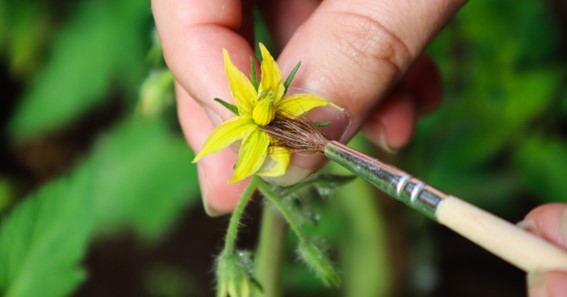Are you curious to know what is emasculation in plants? You have come to the right place as I am going to tell you everything about emasculation in plants in a very simple explanation. Without further discussion let’s begin to know what is emasculation in plants?
Emasculation is a critical process in plant breeding and genetic studies. It involves the removal or inhibition of the male reproductive organs of a plant, enabling controlled cross-pollination to produce desired offspring. In this blog post, we will delve into the fascinating world of emasculation in plants, exploring its purpose, methods, and significance in plant breeding programs.
What Is Emasculation In Plants?
Emasculation is a technique used to prevent self-pollination and promote controlled cross-breeding in plants. By removing the stamens (male reproductive organs) or inhibiting their functionality, emasculation ensures that the plant’s pollen does not fertilize its own pistil. This process is primarily employed in hybridization programs to introduce specific traits or create new plant varieties with desired characteristics.
Methods Of Emasculation:
Emasculation can be performed through various methods depending on the plant species and breeding objectives. Here are a few commonly used techniques:
- Surgical Emasculation: This method involves physically removing the stamens using fine forceps or surgical instruments. It requires precision and delicacy to avoid damaging the plant’s reproductive structures.
- Chemical Emasculation: Chemical agents, such as growth regulators or inhibitors, can be applied to inhibit the development or function of stamens. This method is particularly useful when surgical emasculation is impractical or challenging.
- Gametocidal Emasculation: Some plant species possess naturally occurring gametocidal genes that cause sterility in the male reproductive cells. By utilizing these genes, breeders can induce male sterility without surgical intervention.
Significance Of Emasculation:
Emasculation plays a crucial role in plant breeding for several reasons:
- Hybridization: Emasculation allows breeders to control cross-pollination, facilitating the production of hybrid plants. By carefully selecting the parent plants, desirable traits can be combined, resulting in offspring with improved vigor, disease resistance, yield, or other beneficial characteristics.
- Trait Introduction: Emasculation enables breeders to introduce specific traits from one plant into another. This technique is particularly valuable when attempting to transfer desirable traits, such as resistance to pests or diseases, from wild or related species to cultivated varieties.
- Maintenance of Genetic Purity: In certain cases, emasculation is employed to maintain genetic purity by preventing unwanted cross-pollination. This is essential when working with genetically modified organisms (GMOs) or plants with unique characteristics that must be preserved.
Conclusion:
Emasculation is a vital technique in plant breeding, allowing researchers and breeders to control and manipulate the process of cross-pollination. Through surgical, chemical, or gametocidal methods, the male reproductive organs are removed or rendered non-functional, ensuring controlled fertilization. This technique has revolutionized the development of new plant varieties, enabling the introduction of desirable traits and the maintenance of genetic purity. By understanding the principles and significance of emasculation, we can unlock new possibilities for agricultural advancement and the creation of sustainable crop varieties.
FAQ
What Is Emasculation With An Example?
Emasculation is a biological term given for the procedure of removing stamens from a bisexual flower. Stamens are removed by forceps or hands taking care that other floral parts are not harmed. This is done to prevent self-pollination and promote artificial cross-pollination.
What Is Emasculation Also Known As?
It is also known as heterogamy and produces new varieties having healthier offspring.
How Is Emasculation Done In Plants?
In the emasculation technique the stamens are removed before anthesis to obtain a female parent and pollen from the desired male parent is transferred onto its stigma.
What Is The Example Of Emasculation In Class 12?
Emasculation is the process of artificial hybridization in which the stamens from the female flowers are removed from bisexual flowers in order to prevent self-fertilization. This process is carried out long before the anthers mature.
I Have Covered All The Following Queries And Topics In The Above Article
Emasculation In Plants Examples
Types Of Emasculation In Plants
What Is Emasculation In Flower
Importance Of Emasculation
Bagging In Plants
Methods Of Emasculation
What Is Emasculation In Plants
What is meant by emasculation in plants
What is emasculation in short answer
